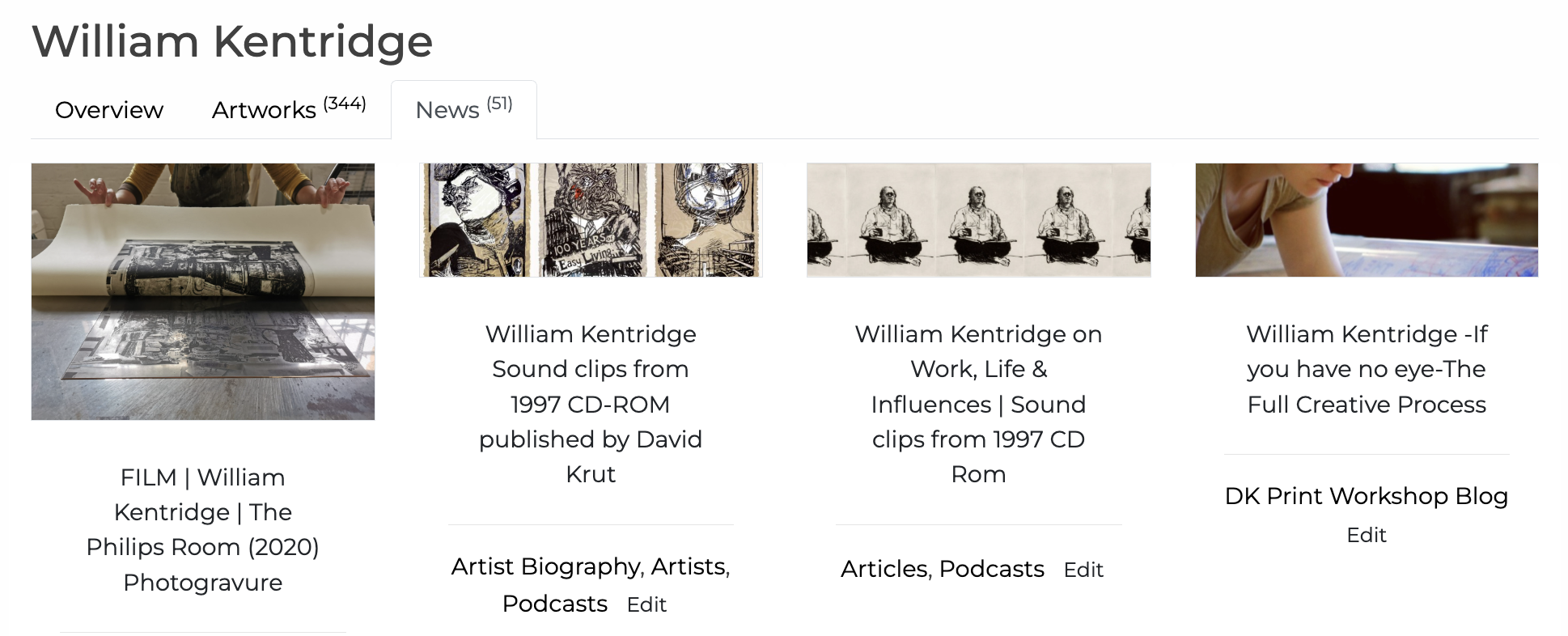Written by Lungile Ngcobo
Collaborative Printer: Kim-Lee Loggenberg-Tim
William Kentridge’s latest edition Still life with fish bowl (2024) marks his ongoing exploration of process, collaboration, and transformation using print as medium at the David Krut Workshop (DKW). David Krut has been publishing editions with Kentridge for over 30 years, working with numerous skilled printmakers and refining his approach through constant dialogue with the workshop’s team.
Created in November 2024 in collaboration with master printer Kim-Lee Loggenberg-Tim at DKW, this work expands upon his enduring engagement with still life, memory, and materiality. The print reflects his ability to rework and evolve imagery, capturing the tension between permanence and impermanence that defines much of his practice.
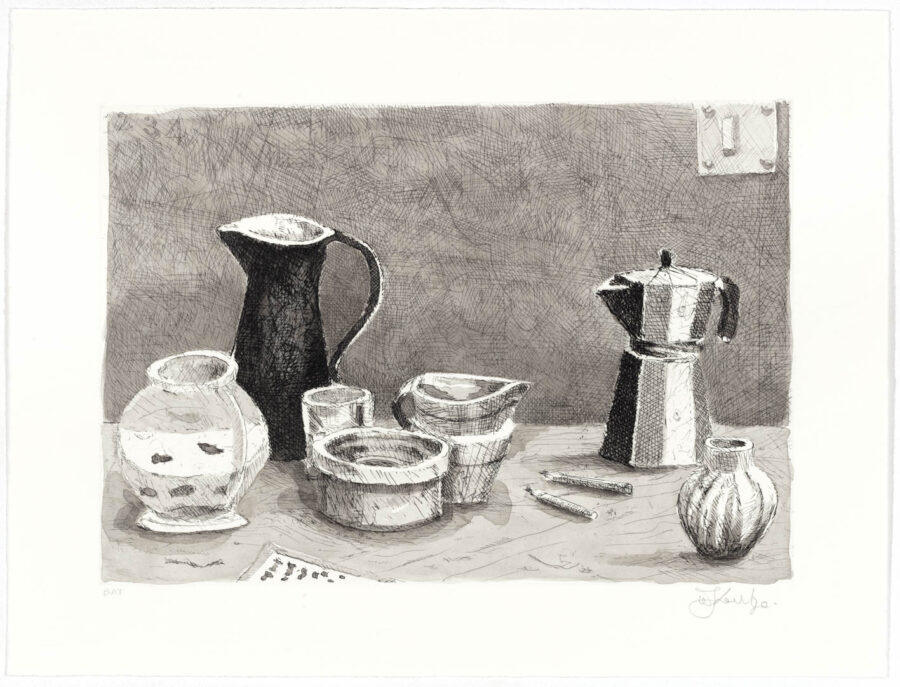
Inspired by historical still life traditions, Kentridge’s new print continues his exploration of the intimate studio environment. The work alludes to Henri Matisse’s fascination with still life compositions, particularly his iconic Goldfish (1912), which explored reflection, distortion, and the interplay of objects within space. This layered approach aligns with Kentridge’s own methods of reinterpreting the same subject matter in multiple iterations, transforming ordinary objects into poetic symbols of time and memory.
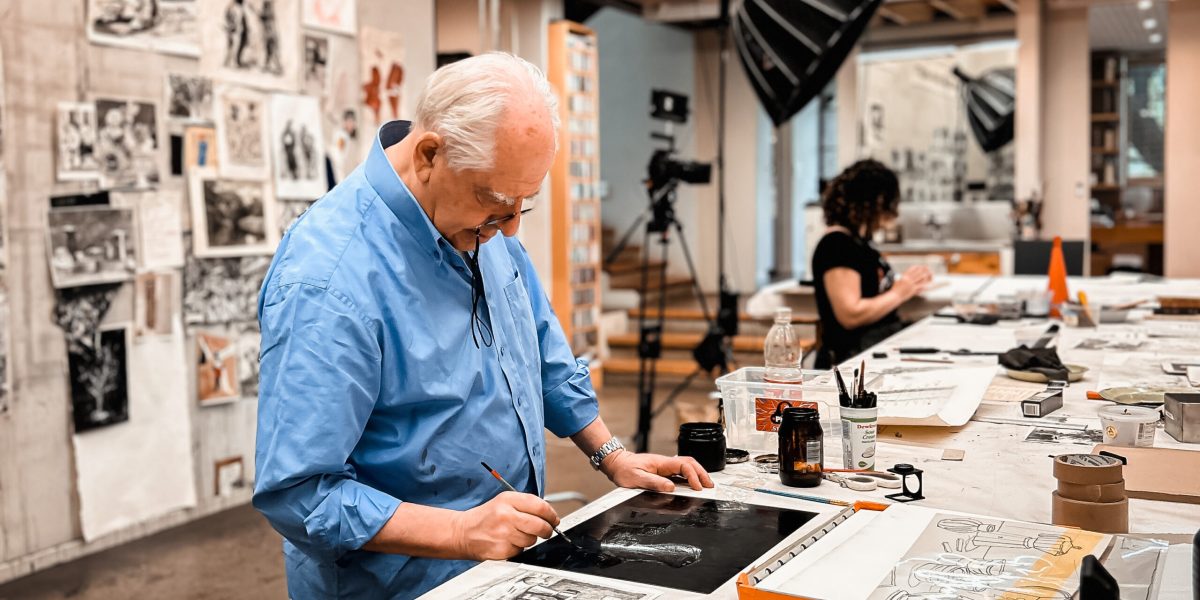
Kentridge’s still life compositions have always been more than simple representations of objects; they are reflections on history, memory, and the passage of time. The depiction of jugs, jars, and containers serves both functional and symbolic purposes. These objects carry stories, embodying the weight of personal and collective histories. The new print continues this conversation, emphasising how objects act as vessels of meaning, capable of holding the ephemeral moments of human experience.
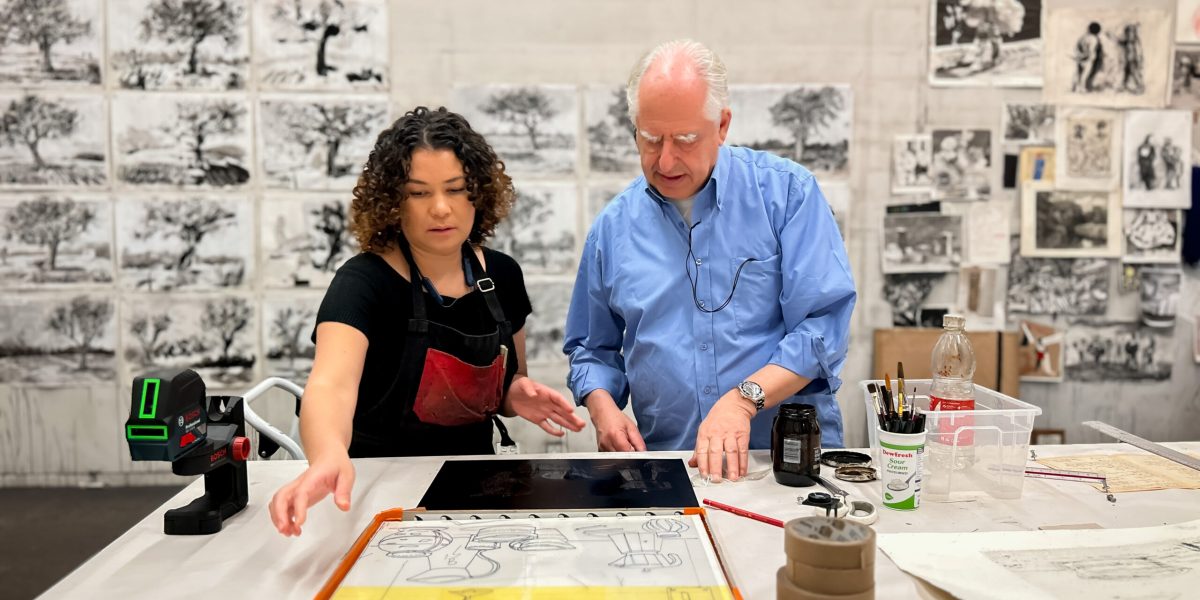
Like Italian painter Giorgio Morandi, Kentridge finds resonance in the quiet arrangement of everyday forms. Kentridge’s approach looks back to Morandi’s masterful use of fine cross-hatching to create depth and atmosphere. Both artists use subtle tonal shifts and layering to create compositions that transcend their mundane subjects, turning simple objects into meditations on space, time, and perception.
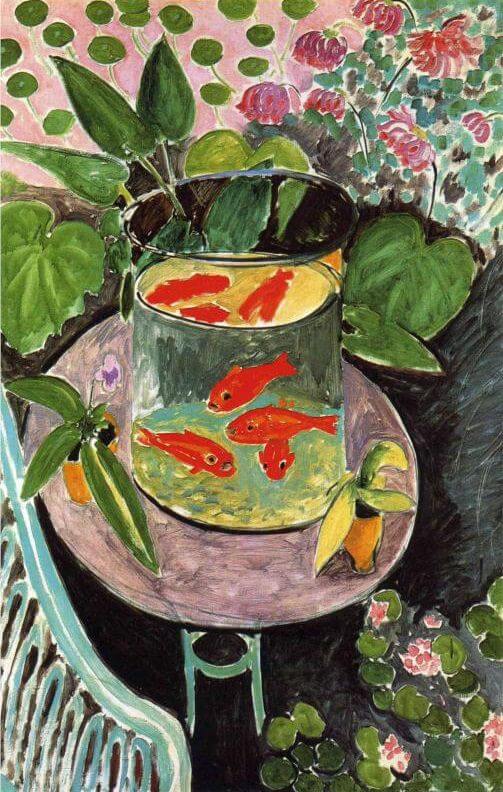
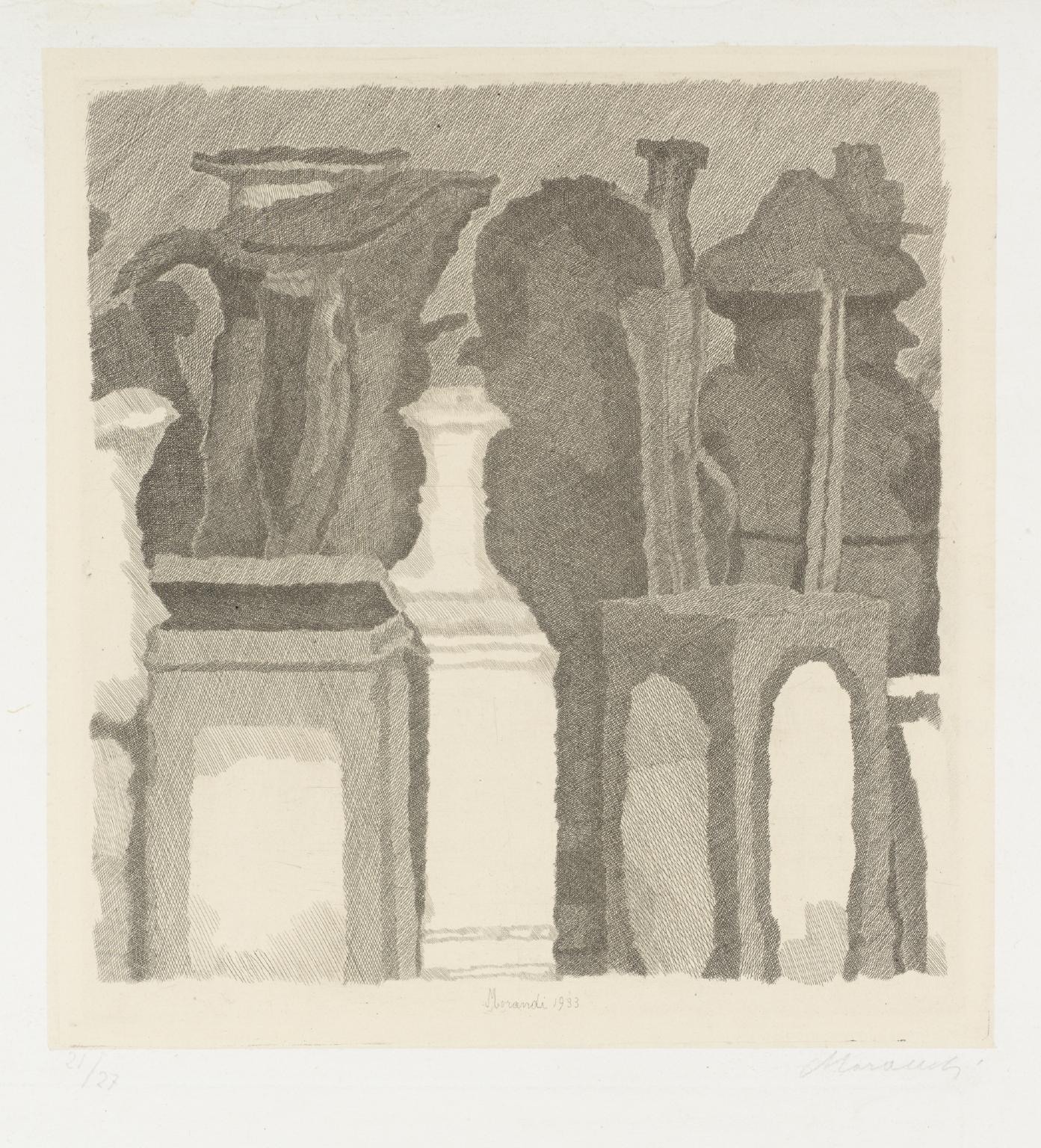
To achieve a range of tonal values, Kentridge employed multiple etching stages, carefully controlling the time each section of the plate was exposed to the ferric chloride solution. Lighter areas were etched briefly, preserving delicate lines, while darker regions underwent longer exposure, deepening the grooves and enriching the contrast. Through step–biting, he methodically covered parts of the plate at different intervals, layering tones to create depth and dimension. This meticulous process ensured that the final print captured a full spectrum of light and shadow.
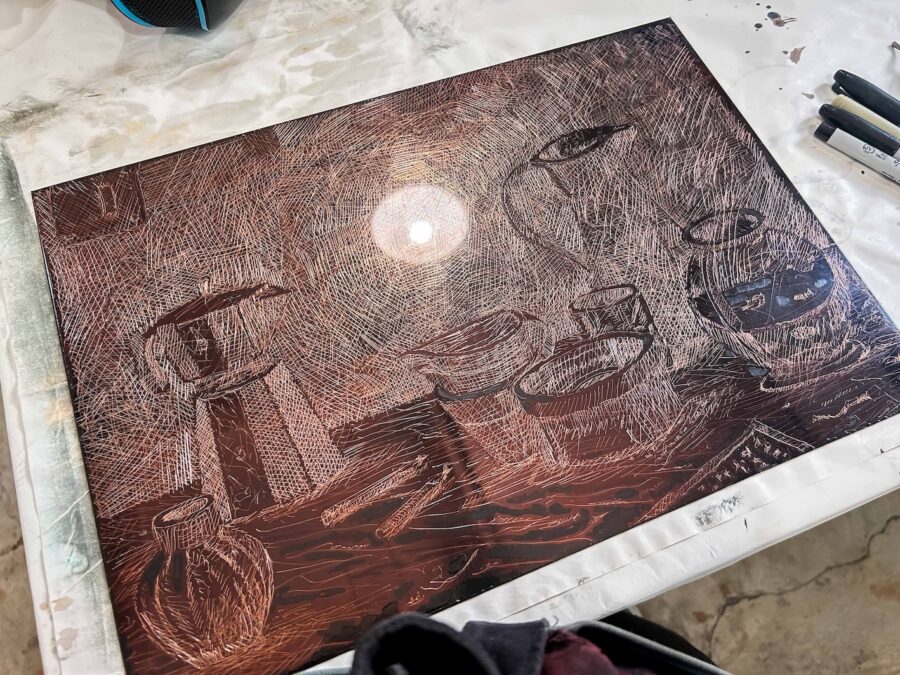
For the final state, Kentridge introduced hand-painting to further enrich the tones in the image. This addition allowed for greater control over perspective and shadow, creating a dynamic interplay between light and form. Each brushstroke contributes to the overall composition, heightening the contrast between the objects and their surrounding space. This painterly intervention enhances the print’s expressive quality, making it a striking addition to Kentridge’s evolving body of work.
Still life with fish bowl (2024) represents a continuation of his exploration of process, collaboration, and the intimate dialogue between artist and medium. The workshop provides a space for this process and allows Kentridge the freedom to play with this material technique through collaboration. Etching allows him to transform and evolve the plate over time, reworking and reinterpreting the same image in multiple versions. This iterative process hints at the possibility of Kentridge working further into the plate to create a second version of the image.
By connecting this new work to the traditions of still life, from Morandi’s meticulous hatching to Matisse’s vibrant compositions, Kentridge reaffirms his commitment to uncovering the extraordinary within the ordinary. This work delves into the studio as a space of solitude and creativity but also invites viewers to find beauty and meaning in the simplest of forms.
For more information contact [email protected]
Read more blogs below about recent projects with William Kentridge:
